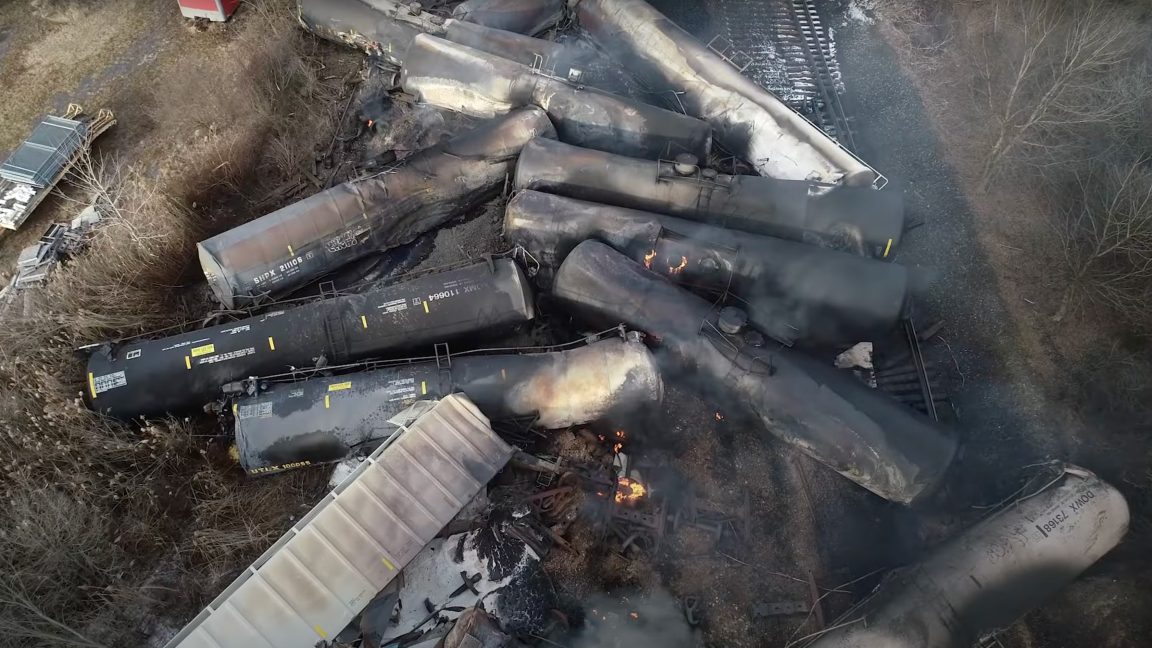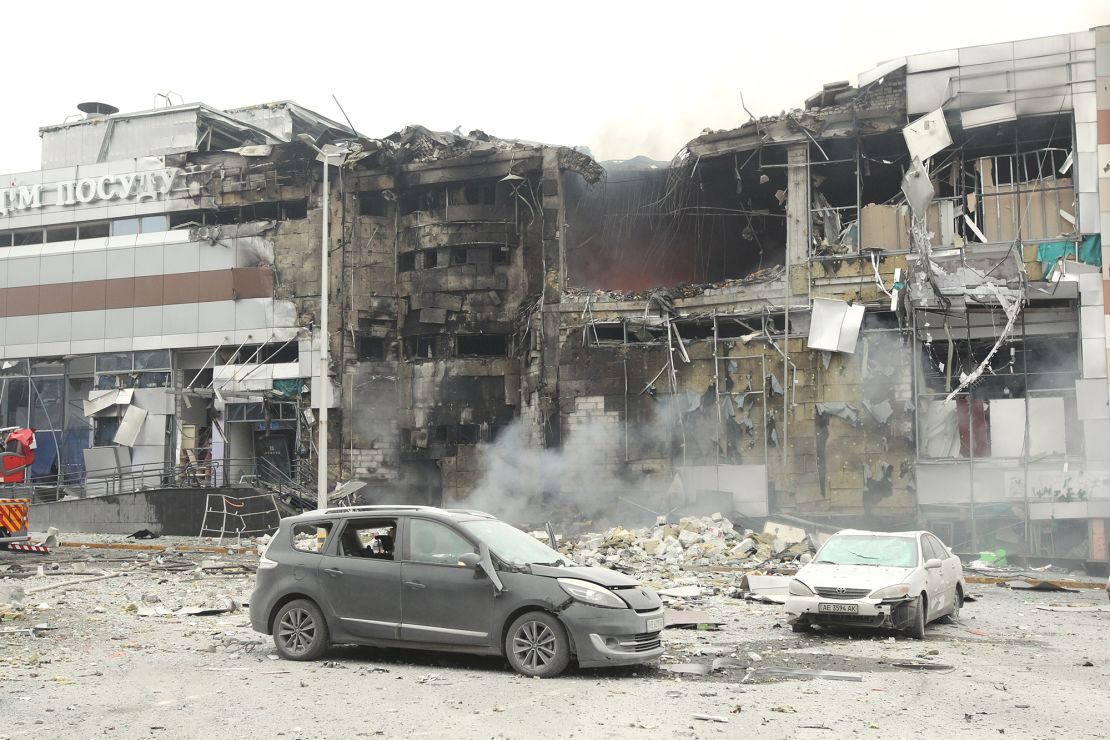Months-Long Lingering Of Toxic Chemicals From Ohio Train Derailment In Buildings

Table of Contents
Types of Toxic Chemicals and Their Persistence
The Ohio train derailment released a cocktail of toxic chemicals, with vinyl chloride and butyl acrylate being among the most concerning. These substances, and others, possess properties that contribute to their persistence in the environment and within building structures. Their volatility allows them to spread easily through the air, while their ability to adsorb to surfaces means they can cling to walls, carpets, furniture, and other materials for extended periods.
- Vinyl Chloride: Half-life in air varies depending on environmental conditions, but it can persist for considerable periods, especially in enclosed spaces. It's known to penetrate porous building materials.
- Butyl Acrylate: This chemical, while less volatile than vinyl chloride, can still remain in buildings for extended periods, potentially off-gassing slowly over time. It can also be absorbed into various materials.
- Other Chemicals: The exact mix of released chemicals is still being assessed, and many have unknown long-term effects within the built environment.
The penetration of these chemicals into building materials is a major concern. They can seep into walls, flooring, and insulation, creating a reservoir of contamination that may release toxins over months or even years. This long-term off-gassing poses a significant and ongoing health threat to occupants.
Pathways of Chemical Contamination in Buildings
The spread of toxic chemicals from the derailment site to nearby buildings occurred through several pathways. Airborne dispersal played a significant role, with wind patterns carrying plumes of contaminated air over considerable distances. Water runoff, carrying dissolved or adsorbed chemicals, also contributed to contamination, potentially affecting basements and lower levels of buildings.
- Airborne Dispersal: Prevailing wind patterns influenced the direction and extent of airborne chemical dispersal. Building proximity to the derailment site was a crucial determinant of contamination levels.
- Water Runoff: Rain and melted snow carried chemicals into the drainage system, potentially contaminating groundwater and surface water, leading to indoor contamination through water infiltration.
- HVAC Systems: Contaminated air could have been drawn into building HVAC systems, potentially distributing toxins throughout the entire structure.
- Contaminated Soil: Soil near the derailment site became contaminated, and this contamination could be tracked into buildings on shoes, clothing, and even by dust particles entering through cracks and openings.
Understanding these pathways is crucial for developing effective remediation strategies.
Health Impacts of Long-Term Exposure
Exposure to the toxic chemicals released during the derailment poses serious health risks, with both short-term and long-term consequences. Short-term effects range from respiratory irritation and headaches to more severe conditions. However, the long-term implications of chronic, low-level exposure are particularly concerning.
- Vinyl Chloride: Linked to liver cancer, brain tumors, and other cancers.
- Butyl Acrylate: Can cause respiratory irritation, skin sensitization, and eye irritation. Long-term effects are less well-understood.
- Other Chemicals: Many of the chemicals released have potential long-term health consequences, which may not manifest for years after exposure.
Diagnosing long-term effects from exposure to these chemicals can be challenging. The insidious nature of low-level, chronic exposure makes it difficult to establish clear cause-and-effect relationships. Ongoing health monitoring of affected populations is crucial to assess the extent of long-term health impacts.
Remediation and Mitigation Strategies
Remediating contaminated buildings after the Ohio train derailment presents significant challenges. The complex mixture of chemicals, their varying properties, and their penetration into building materials necessitate a multifaceted approach.
- Air Purification: High-efficiency air filtration systems can help remove airborne toxins.
- Material Removal: Severely contaminated materials, such as carpets, drywall, and insulation, may need to be removed and disposed of properly.
- Soil Remediation: Contaminated soil around buildings may require excavation and treatment.
- Ventilation: Improving building ventilation can help reduce indoor concentrations of toxins.
The cost and feasibility of complete remediation are considerable obstacles. Decisions about remediation strategies often involve balancing the cost of complete removal with the risk of ongoing exposure. Proper ventilation and air filtration are essential mitigation measures, even in the absence of full-scale remediation.
Legal and Regulatory Responses
The Ohio train derailment has triggered numerous legal actions and regulatory reviews. Lawsuits have been filed against the railroad company and other involved parties, seeking compensation for damages and health-related costs. Regulatory agencies are evaluating the adequacy of existing environmental regulations and exploring potential improvements.
- Lawsuits: Multiple class-action lawsuits have been filed, addressing the long-term health effects and property damage resulting from the derailment.
- Regulatory Review: Federal and state agencies are reviewing safety regulations concerning the transportation of hazardous materials and the response to derailments.
- Enforcement: Strengthened enforcement of existing regulations and the development of more stringent standards are critical for preventing future incidents.
The ongoing legal and regulatory responses underscore the need for stronger oversight and accountability in the transportation and handling of hazardous materials.
Conclusion
The months-long lingering of toxic chemicals from the Ohio train derailment presents a severe and ongoing public health crisis. The persistence of these chemicals in buildings, coupled with the potential for long-term health impacts, highlights the urgent need for effective remediation strategies and robust regulatory measures. The complex nature of this disaster and the challenges of remediation emphasize the need for a coordinated effort involving government agencies, industry, and the affected communities. Understanding the months-long lingering of toxic chemicals is crucial. Demand better safety regulations and support ongoing efforts to remediate contaminated buildings and protect public health. Stay informed and advocate for change.

Featured Posts
-
 Just Contact Us Tik Toks Role In Tariff Evasion
Apr 22, 2025
Just Contact Us Tik Toks Role In Tariff Evasion
Apr 22, 2025 -
 T Mobiles 16 Million Data Breach Fine Three Years Of Security Failures
Apr 22, 2025
T Mobiles 16 Million Data Breach Fine Three Years Of Security Failures
Apr 22, 2025 -
 Ukraine War Fighting Resumes After Putins Easter Ceasefire Ends
Apr 22, 2025
Ukraine War Fighting Resumes After Putins Easter Ceasefire Ends
Apr 22, 2025 -
 Blockchain Analytics Leader Chainalysis Integrates Ai Startup Alterya
Apr 22, 2025
Blockchain Analytics Leader Chainalysis Integrates Ai Startup Alterya
Apr 22, 2025 -
 Ukraine Conflict Kyiv Under Pressure To Respond To Trump Plan
Apr 22, 2025
Ukraine Conflict Kyiv Under Pressure To Respond To Trump Plan
Apr 22, 2025
